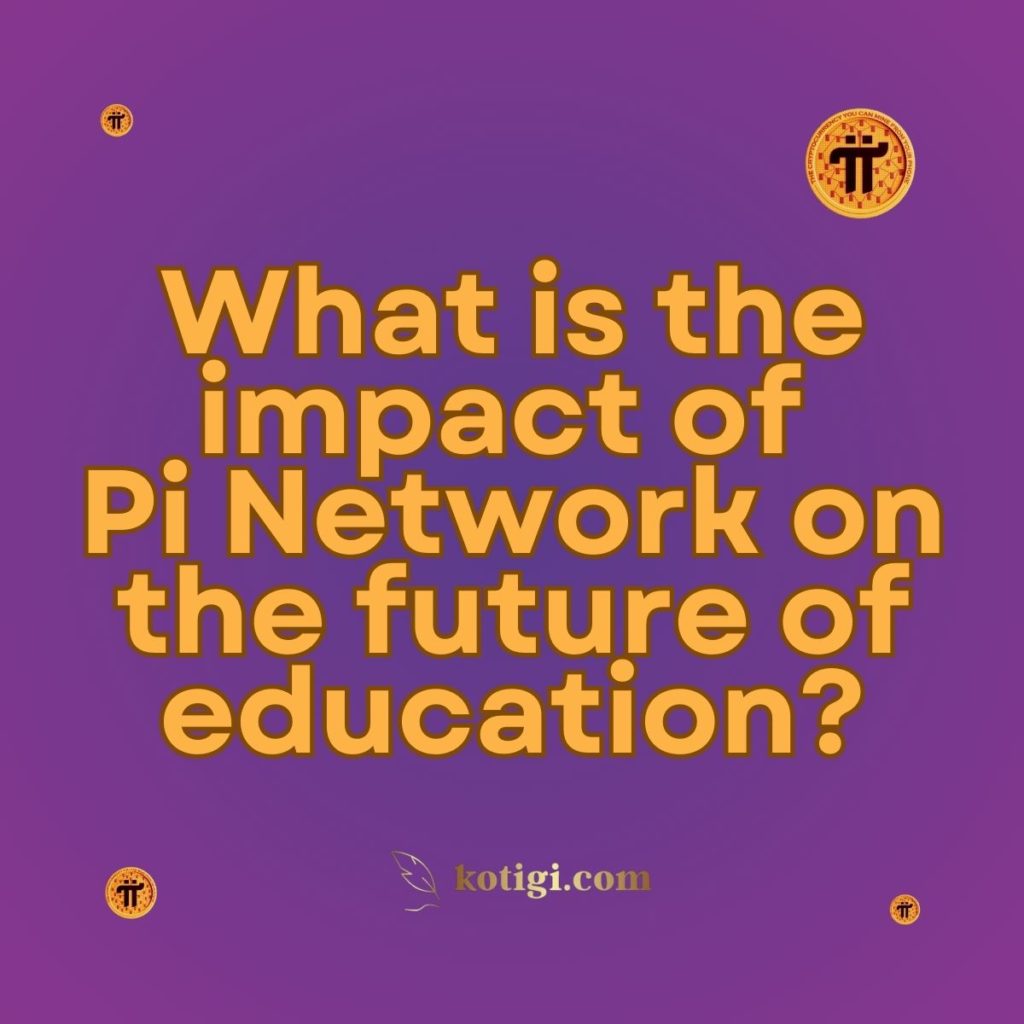
What is the impact of Pi Network on the future of education?
Pi Network is revolutionizing the future of education by enhancing accessibility to learning resources, fostering digital literacy, promoting collaborative learning, and introducing new economic models for educational institutions. This article explores the various ways Pi Network is shaping educational practices and empowering learners in the digital age.
Introduction
The landscape of education is undergoing a significant transformation, driven by advancements in technology and the increasing demand for accessible learning opportunities. Pi Network, launched in 2019, is at the forefront of this evolution, offering a unique platform that enables users to mine cryptocurrency through their mobile devices. This innovative approach not only democratizes access to digital currencies but also opens up new possibilities for educational practices. By enhancing accessibility, fostering digital literacy, and promoting collaboration, Pi Network is poised to have a lasting impact on the future of education. In this article, we will examine how Pi Network influences educational accessibility, digital literacy, collaborative learning, economic models for education, and the overall learning experience.
Enhancing Accessibility to Learning Resources
One of the most significant impacts of Pi Network on education is its potential to enhance accessibility to learning resources for individuals around the globe.
Bridging the Digital Divide
Pi Network’s mobile mining capabilities make it possible for individuals in underserved communities to participate in the digital economy. By providing access to cryptocurrency through a smartphone, Pi Network bridges the digital divide and empowers individuals who may not have access to traditional financial systems. This newfound access can open doors to educational resources that were previously out of reach.
Affordable Education Options
As users earn Pi coins, they can potentially use them to pay for educational materials, courses, and resources. This affordability may reduce the financial barriers that often limit access to quality education. Institutions that accept Pi as a form of payment could cater to a wider audience, enabling learners from diverse backgrounds to access valuable educational opportunities.
Remote Learning Opportunities
Pi Network’s decentralized approach facilitates remote learning experiences, allowing individuals to participate in courses and training programs from anywhere in the world. This flexibility can be particularly beneficial for learners who face geographical or logistical challenges. As education becomes more accessible through digital platforms, Pi Network plays a vital role in supporting remote learning initiatives.
Fostering Digital Literacy
The rise of Pi Network encourages the development of digital literacy among users, a crucial skill set in the modern world.
Understanding Cryptocurrency and Blockchain
Engagement with Pi Network introduces users to fundamental concepts of cryptocurrency and blockchain technology. As individuals mine and use Pi coins, they gain insights into how digital currencies operate, enhancing their understanding of financial systems. This knowledge equips learners with essential skills for navigating the rapidly evolving digital economy.
Building Technical Skills
As users interact with the Pi Network platform, they may develop technical skills related to digital wallets, transactions, and online security. These skills are increasingly valuable in today’s job market, where technological proficiency is essential. By fostering digital literacy, Pi Network contributes to a more skilled and knowledgeable workforce.
Promoting Lifelong Learning
The continuous evolution of technology necessitates ongoing education and adaptability. Pi Network encourages users to stay informed about developments in the cryptocurrency and blockchain space, promoting a culture of lifelong learning. This commitment to education empowers individuals to adapt to changing circumstances and seize new opportunities.
Promoting Collaborative Learning
Pi Network’s community-driven approach fosters collaborative learning environments where users can connect and share knowledge.
Peer-to-Peer Learning
The decentralized nature of Pi Network enables users to engage in peer-to-peer learning experiences. Individuals can share insights, resources, and expertise, fostering a collaborative spirit within the community. This interaction enhances the overall learning experience, allowing users to learn from one another and build a supportive network.
Collaborative Projects and Initiatives
As Pi Network expands, opportunities for collaborative projects may arise, encouraging users to work together on educational initiatives. By collaborating on projects related to cryptocurrency, blockchain, and digital finance, individuals can apply their skills in real-world contexts. This hands-on experience enhances understanding and retention of knowledge.
Creating Learning Communities
Pi Network promotes the formation of learning communities where users can collectively pursue knowledge and skill development. These communities can serve as platforms for sharing educational content, organizing workshops, and hosting discussions on relevant topics. This sense of belonging fosters motivation and engagement among learners.
Introducing New Economic Models for Education
Pi Network’s economic framework has the potential to reshape how educational institutions operate and generate revenue.
Utilizing Cryptocurrency in Education
Educational institutions may explore the integration of cryptocurrency into their financial models, allowing students to pay for tuition and fees with Pi coins. This innovative approach can provide greater flexibility in payment options and attract a diverse student population. By embracing cryptocurrency, institutions can position themselves as forward-thinking and adaptable to changing economic landscapes.
Funding Educational Initiatives
As Pi Network continues to grow, there may be opportunities for educational initiatives to receive funding through cryptocurrency. This funding model can support innovative projects, research initiatives, and community-based learning programs. By leveraging the Pi Network ecosystem, educational institutions can access new sources of funding that align with their goals.
Empowering Learner-Centric Approaches
With the rise of cryptocurrency, there is potential for educational institutions to adopt learner-centric approaches that prioritize the needs and preferences of students. This shift can lead to personalized learning experiences, where students have more control over their educational journeys. Pi Network contributes to this evolution by encouraging the development of solutions that cater to the diverse needs of learners.
Enhancing the Overall Learning Experience
Pi Network’s impact on education extends to enhancing the overall learning experience for users.
Interactive Learning Platforms
As educational resources become more accessible through Pi Network, there is potential for the development of interactive learning platforms that utilize cryptocurrency for transactions. These platforms can offer gamified learning experiences, incentivizing users to engage with educational content and complete tasks. This interactive approach enhances motivation and makes learning enjoyable.
Real-World Applications of Knowledge
The opportunities created by Pi Network encourage users to apply their knowledge in real-world scenarios. As individuals engage in projects related to cryptocurrency and blockchain, they gain practical experience that reinforces their learning. This connection between theory and practice enhances understanding and prepares learners for future challenges.
Encouraging Innovation in Educational Practices
The rise of Pi Network may inspire educators and institutions to explore innovative teaching methods and practices. By leveraging technology and digital currencies, educators can experiment with new ways to deliver content, assess learning, and engage students. This focus on innovation can lead to more effective and relevant educational experiences.
Conclusion
The impact of Pi Network on the future of education is transformative, encompassing enhanced accessibility, digital literacy, collaborative learning, new economic models, and improved learning experiences. By democratizing access to cryptocurrency and educational resources, Pi Network empowers individuals to engage with education in meaningful ways.
As the network continues to evolve, its influence on educational practices and community engagement will likely grow, paving the way for a more inclusive, innovative, and interconnected learning landscape. By fostering collaboration and promoting continuous learning, Pi Network is shaping the future of education, enabling individuals to thrive in a rapidly changing digital world.
Key Takeaways
- Enhanced Accessibility: Pi Network bridges the digital divide, allowing individuals from diverse backgrounds to access educational resources.
- Digital Literacy Development: Participation in Pi Network promotes understanding of cryptocurrency and blockchain, enhancing users’ digital skills.
- Collaborative Learning: The decentralized approach encourages peer-to-peer learning and the creation of supportive learning communities.
- New Economic Models: Pi Network enables educational institutions to explore cryptocurrency integration and innovative funding models.
- Improved Learning Experiences: Pi Network fosters interactive learning platforms and real-world applications of knowledge, enhancing engagement and motivation.





